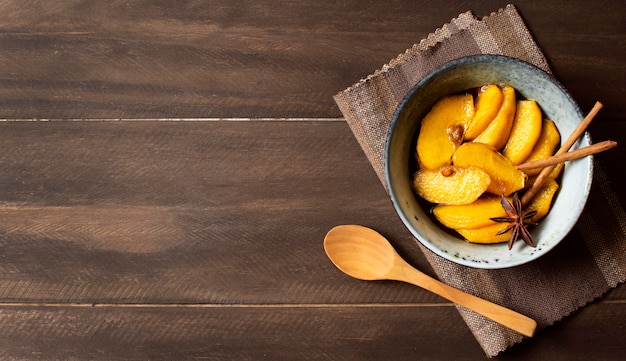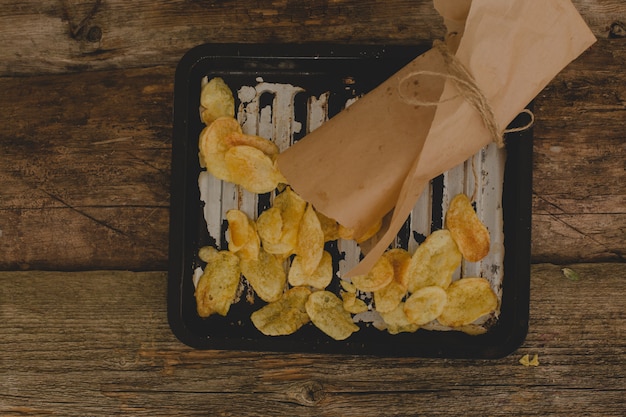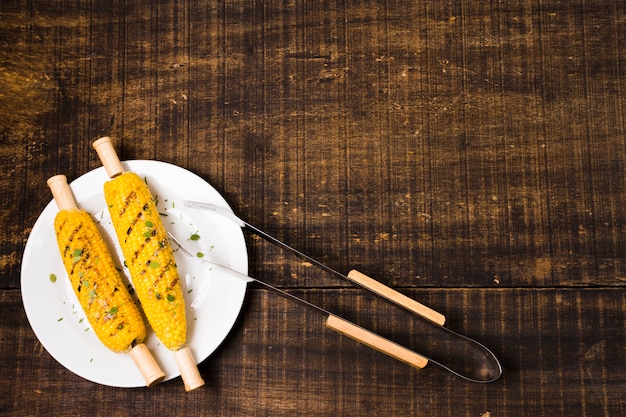Alright, let's talk fried plantains. They're not just a side dish; they're an experience! A symphony of textures and flavors, a journey for your taste buds, and, honestly, a bit of a national treasure in some corners of the world. I'm not just saying that because I'm a bit obsessed with them. No, I'm saying it because I've been there, done that, and got the T-shirt (well, actually, it's a plantain-print apron, but you get the picture).
This isn't just about throwing some plantains in a pan and hoping for the best. This is about mastering the art of frying plantains, about achieving that pinnacle of crispy perfection that makes you want to dance in the kitchen. We're going to delve into all the details, from picking the perfect plantains to mastering the frying technique, and everything in between. Get ready to level up your plantain game, because this is going to be a delicious adventure.
(Part 1) Choosing the Perfect Plantains: Your Guide to Ripe Delights

Why You Can't Just Grab Any Old Plantain
Let's face it: not all plantains are created equal. You want to choose the right ones to get those perfectly crispy, golden-brown beauties. You can't just grab the first green one you see and expect it to work magic. That's like trying to bake a cake with flour and forgetting the eggs—you're missing a crucial ingredient.
The Plantain Colour Code: A Guide to Ripeness
Think of plantains as traffic lights. You've got your green, your yellow, and your black. Each color represents a different stage of ripeness, and each stage has its own unique flavor and texture.
- Green Plantains: These are the babies, still firm and starchy. They're perfect for dishes like tostones, where you want a sturdy base that holds its shape. They'll give you a more savory and slightly starchy flavor.
- Yellow Plantains: These are the goldilocks of plantains—just right! They're ripe enough to be sweet, but still firm enough to fry up beautifully. They're perfect for those classic fried plantains with a hint of sweetness, offering a balance of savory and sweet notes.
- Black Plantains: These are the elders of the plantain world. They're super ripe, super sweet, and super soft. They're perfect for making sweet plantain chips or mashing into a delicious dessert. They'll give you a rich, caramelized sweetness and a soft, almost creamy texture.
The Feel Test: Beyond the Colour
Look, color isn't everything. Give those plantains a good squeeze. You want them to be firm but not rock-hard. If they give a little bit when you press them, you're in the right ballpark. Avoid those super squishy ones; they're likely overripe.
(Part 2) Preparing the Plantains: Getting Ready for the Frying Pan

Peeling It Like a Pro: Master the Technique
You've got your perfect plantains. Now, let's get them ready for their big moment in the pan. Peeling a plantain is a bit different from peeling a banana. The skin can be a bit tough, so we need a little technique.
- Start at the bottom: Cut off the ends and then make a shallow cut along the length of the plantain.
- Pull it back: Gently pull the skin back, starting from the cut you made.
- Clean up: Once the skin is peeled back, remove any remaining bits with a sharp knife.
Slicing for Success: The Right Shape for the Right Dish
Once peeled, you need to slice those plantains into the right shape and thickness. Here's the deal:
- Thin for Chips: If you want crispy plantain chips, slice them thinly, about 1/4 inch thick. This ensures even cooking and a satisfying crunch.
- Medium for Frying: For classic fried plantains, aim for slices about 1/2 inch thick. This gives you a good balance of crispy exterior and tender interior, creating a delightful textural contrast.
- Thick for Tostones: If you're going for tostones, slice them about 1 inch thick. These will hold their shape as you flatten them for the tostones, providing a sturdy base for your delicious creation.
Soaking for a Smoother Finish: A Little Secret for Crispy Perfection
Here's a little trick I learned from my grandma: soak the plantain slices in water for about 10 minutes before frying. This helps remove excess starch and gives you a smoother, crispier finish. Trust me, it makes a difference! The starch can make the plantains stick together and absorb more oil, so this extra step helps them cook more evenly and prevents a gummy texture.
(Part 3) The Frying Frenzy: Setting the Stage for Crispy Delights

Choosing Your Oil: The Right Fuel for Your Frying Adventure
Okay, we're finally at the frying stage. Choose a good neutral oil like vegetable oil, canola oil, or peanut oil. These oils have high smoke points, meaning they can handle the high temperatures without burning. Avoid olive oil—it's too delicate for frying and will impart its own flavor.
Heat is Key: Achieving the Perfect Frying Temperature
This is where things get serious. The oil needs to be hot enough to fry the plantains without absorbing too much oil. You want a deep fryer or a large skillet that can hold enough oil to submerge the plantains.
Testing the Heat: The Simple Trick to Know When It's Ready
There's a simple trick to tell if the oil is ready. Drop a tiny piece of plantain into the oil. If it sizzles immediately and floats to the surface, it's time to fry! If it sits at the bottom or bubbles slowly, the oil isn't hot enough.
(Part 4) Frying Techniques: Mastering the Art of Golden Perfection
The Gentle Approach: For Classic, Tender Fried Plantains
This is the classic way of frying plantains. Gently lower the slices into the hot oil and let them cook undisturbed. You'll see them start to bubble and brown. Flip them over once they're golden brown on one side, and fry the other side until it's crispy and golden too. This method allows the plantains to cook slowly and evenly, resulting in a tender, slightly caramelized interior and a beautifully crisp exterior.
The Quick and Crispy Method: For Deliciously Crunchy Plantain Chips
This is for those who want crispy perfection in a hurry. Work in batches, making sure not to overcrowd the pan. Fry the plantains for a couple of minutes per side, until they're golden brown and crispy. This method is great for plantain chips as it creates a super-crunchy texture.
The Toasted Twist: For Tostones, the Crispy Cuban Delight
If you're making tostones, you'll need to toast the fried plantains. After frying, flatten the slices with a heavy object like a plate or a tortilla press. Toast them in the pan for another minute or two on each side until they're crispy and slightly charred. This adds a smoky, almost caramelized flavor to the tostones, making them even more irresistible.
(Part 5) Seasoning and Serving: Elevating Your Fried Plantain Game
Sweet and Savoury: A World of Flavor Possibilities
Okay, let's talk about flavor. Fried plantains are a blank canvas, and you can take them in a million different directions.
Sweet Side: Embrace the Sweetness
Sugar and Cinnamon: This is a classic. Just sprinkle some sugar and cinnamon on top while they're hot. The sweetness of the sugar combined with the warm spice of cinnamon creates a comforting and familiar flavor.
Honey Glaze: Drizzle some honey over the fried plantains for a sweet and sticky treat. The honey adds a touch of richness and complexity, making the plantains even more indulgent.
Maple Syrup: For a more robust flavour, try some maple syrup. The maple syrup provides a deeper, more intense sweetness, perfect for those who like a little extra kick.
Savoury Side: Explore the Savory Flavors
Salt and Pepper: Keep it simple with a pinch of salt and pepper. This enhances the natural flavors of the plantain without overpowering them.
Garlic Powder: Add a hint of garlic flavor with some garlic powder. Garlic powder adds a savory, pungent aroma that complements the sweetness of the plantains.
Paprika: For a bit of spice, sprinkle some paprika on top. Paprika provides a subtle warmth and a hint of smokiness, adding another dimension to the flavor profile.
Hot Sauce: Give them a kick with your favourite hot sauce. Hot sauce adds a fiery kick and a touch of acidity, perfect for those who like a bit of heat.
Serving Suggestions: Enjoy Your Fried Plantain Creations
Breakfast: Fried plantains are a delicious addition to your breakfast plate. Serve them with eggs, bacon, or sausages. The sweetness of the plantains balances the savory flavors of the breakfast staples.
Lunch: Fried plantains are great as a side dish with chicken, fish, or steak. The crispy texture and the sweet or savory flavors complement a wide range of proteins.
Dinner: They're a perfect accompaniment to any Caribbean or Latin American dish. Fried plantains are a staple in many Caribbean and Latin American cuisines, adding a touch of authenticity and deliciousness to your meal.
Snack: Enjoy them as a snack on their own, or pair them with a dollop of sour cream or guacamole. They're a satisfying and flavorful snack that can be enjoyed any time of day.
(Part 6) Plantain Hacks: Making it Easier and More Versatile
The Air Fryer Alternative: Crispy Perfection Without the Mess
Don't have a deep fryer? No problem! You can fry your plantains in an air fryer. Just preheat your air fryer to 400°F (200°C) and cook the slices for about 8-10 minutes, flipping them halfway through. This method is much easier to clean up, and the air fryer's circulating heat helps achieve a crispy texture.
The Oven-Baked Method: A Healthier Option
You can also bake your plantains for a healthier option. Preheat your oven to 400°F (200°C) and place the slices on a baking sheet lined with parchment paper. Bake for 15-20 minutes, flipping them halfway through. While not as crispy as frying, baking provides a lighter alternative, and you can achieve a nice caramelized flavor.
Freezing for Future Fried Goodness: Planning Ahead
If you're planning ahead, you can freeze your plantain slices. Just fry them as usual, and then cool them completely. Place them in a freezer bag and store for up to 3 months. When you're ready to eat them, just heat them up in a pan or in the microwave. This is a great way to enjoy fried plantains at your convenience.
(Part 7) Plantain Variations: Beyond the Classic Fried
Tostones: The Cuban Classic: A Crispy, Flattened Delight
Tostones are thick fried plantain slices that are then flattened and toasted. They're a staple in Cuban cuisine, and they're absolutely delicious. The flattening and toasting process creates a unique texture that is both crunchy and slightly chewy, and the flavors are intensified.
Patacones: The Colombian Delight: Toasted Perfection
Patacones are similar to tostones, but they're often seasoned with salt and pepper and topped with a variety of sauces and toppings. They're a popular street food in Colombia and other parts of South America, and they're incredibly versatile. You can customize them with your favorite toppings, from salsa and sour cream to hot sauce and cheese.
Plantain Chips: Crunchy Perfection: A Snacking Staple
Thinly sliced and fried, plantain chips are a crispy, addictive snack. You can season them with anything you like, from salt and pepper to spices to even chocolate. They're a great alternative to potato chips and are packed with flavor.
(Part 8) plantain recipes to Get You Started: Jump into the World of Plantains
Here are a few of my favourite plantain recipes to get you started:
- Classic Fried Plantains: This is a simple and delicious recipe that everyone can make. It's a perfect starting point for exploring the world of fried plantains, and it's sure to become a favorite.
- Sweet Plantain Chips: A crunchy and sweet snack that's perfect for any occasion. These chips are a great way to satisfy your sweet tooth and your craving for something crunchy.
- Tostones with Garlic Sauce: A classic Cuban dish that's both delicious and easy to make. This is a perfect example of how to elevate the simple fried plantain into a more complex and flavorful dish.
FAQs: Your Questions Answered
1. Can I use unripe plantains for fried plantains?
While you can use unripe plantains for tostones, it's not recommended for classic fried plantains. Unripe plantains are too starchy and will not fry up as well. They'll be more difficult to cook evenly and might end up with a gummy texture.
2. How long can I store fried plantains?
Fried plantains are best enjoyed fresh. However, you can store them in an airtight container in the refrigerator for up to 2 days. They'll lose some of their crispness over time, but they'll still be delicious.
3. What happens if the oil isn't hot enough?
If the oil is not hot enough, the plantains will absorb too much oil and become greasy. They will also not be as crispy. The plantains will also cook more slowly and unevenly, resulting in a less desirable texture.
4. What should I do if my plantains are too sweet?
If you've chosen overripe plantains and they are too sweet, you can try adding a pinch of salt to the oil before frying. This will help balance out the sweetness. The salt will also add a savory note, complementing the sweetness.
5. What other dishes can I make with plantains?
Plantains are a versatile ingredient and can be used in a variety of dishes. You can make plantain soup, plantain bread, plantain pudding, and even plantain pizza! Plantains are also great in smoothies and salads.
I hope this ultimate guide to fried plantains has been helpful. Go forth and conquer the world of plantain frying!
Everyone is watching

Corn on the Cob: The Ultimate Guide to Perfectly Cooked Ears
Healthy MealsAh, corn on the cob. Just the name evokes images of sunny days, barbecues, and that sweet, juicy flavour that ...

Perfect Pork Roast Oven Cooking Time: A Guide to Delicious Results
Healthy MealsThere's something truly satisfying about a perfectly roasted pork. The aroma alone is enough to make your mout...

Ham Cooking Time: How Long to Bake, Smoke, or Boil a Delicious Ham
Healthy MealsAh, ham. It's a classic, isn't it? A real crowd-pleaser, especially around holidays. And when done right, it'...

Scallops: The Ultimate Guide to Perfect Cooking
Healthy MealsAh, scallops. Those delicate, sweet, and utterly delicious morsels of the sea. They hold a special place in my...

Spaghetti Squash: The Ultimate Guide to Cooking and Serving
Healthy MealsRemember that time you saw spaghetti squash at the supermarket, looking all bumpy and strange, and thought, "W...
